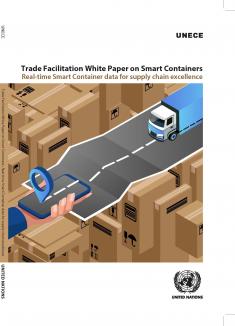Published:

 Technology is entering into every aspect of the supply chain and providing performant and innovative tools. As many are just starting to talk about the dematerialization of certain documents used in trade and transport, others are investigating how devices can communicate information directly to the rest of the supply chain without human intervention.
Technology is entering into every aspect of the supply chain and providing performant and innovative tools. As many are just starting to talk about the dematerialization of certain documents used in trade and transport, others are investigating how devices can communicate information directly to the rest of the supply chain without human intervention.Smart Containers are taking the digital age of shipping one step further beyond paperless processes by embracing the Internet of Things (IoT) to support enhanced decision-making by the various sectoral stakeholders. This provides greater visibility to the stakeholders within the transaction as well as to regulatory agencies who need detailed information on the consignments before they arrive at the border. This technology can be combined with other innovations such as blockchain, big data or data pipelines to provide even more facilitation to the trading community. In all of these cases, though, we see that creating clear, unambiguous message exchange standards will allow to capitalize the full potential of the enahanced data.
This paper provides a detailed look into the various benefits of using Smart Containers as well as the various potential use cases for this technology. The project team continues its work to provide clear semantic standards for the exchange of this data in order to ensure that all stakeholders understand the same information in the same way.
This publication (ECE/TRADE/446) available in English, French and Russian, offer a useful aid to all parties interested in the technical applications and implementation of IoT technologies and that this important process will continue to contribute to the enhancement and growth of international trade.